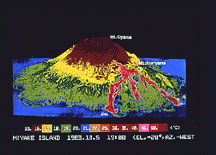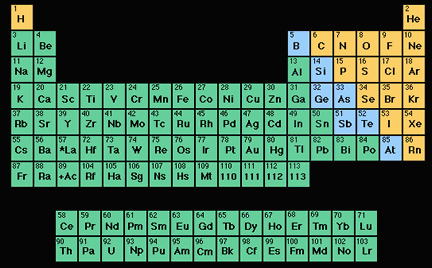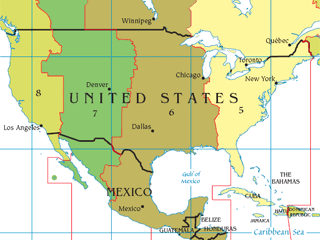The wavelength of a wave is the distance from one crest to the next.
Click on image for full size
Windows to the Universe original artwork.
Wavelength
Have you ever seen waves in the ocean or on a lake? If you watch the waves, you will see that they come one after another after another. Each wave is about as far away from the one in front of it as it is from the one behind it.
We can measure how far it is between the waves. Usually we measure from the top of one wave to the top of the next. The distance we measure is called the wavelength of the wave. The waves we see at a beach usually have a wavelength of 10 meters (33 feet) or longer.
Did you know that sound moves through the air in waves? Sound waves that people
can hear
have wavelengths between about 2 cm (an inch) and 17 meters (56
feet).
Light is also a kind of wave. Waves of electricity and magnetic force move through space. Those waves are called electromagnetic waves. Light is one kind of electromagnetic wave. Light waves are very, very, very short. Light waves have wavelengths between 400 and 700 nanometers (a nanometer is one billionth of a meter!).
You might also be interested in:

Text for this level has not been written yet. Please see the "Intermediate" text for this page if you want to learn about this topic. To get to the "Intermediate" text, click on the blue "Intermediate"
...more
In order to study and explain space weather, scientists need to use some pretty complex math. So if you would like to study space weather when you grow up, keep plugging away in your math class! For example,
...more
There are some basic ideas that you find in many kinds of science. We have grouped these "starting points for science" into three areas: space, time, and matter. On one hand, "space" is the term we use
...more
Some science problems are so complicated that you need SUPERCOMPUTING power to tackle them! Just what is a supercomputer? A supercomputer is a computer that is one of the fastest or most powerful computers
...more
Computers have become a normal part of life. They are used to send e-mail, write a school report or look up recipes. They are used to crunch the latest baseball stats and deliver phone calls to the right
...more
When it is noon where you live, it is midnight on the opposite side of the world. Usually when we think of time, we mean "the time of day where I live". If we say something happened at 9 AM, we mean it
...more
The force of magnetism causes material to point along the direction the magnetic force points. Here's another picture of how this works. This picture shows where the magnetic poles of the Earth are to
...more














